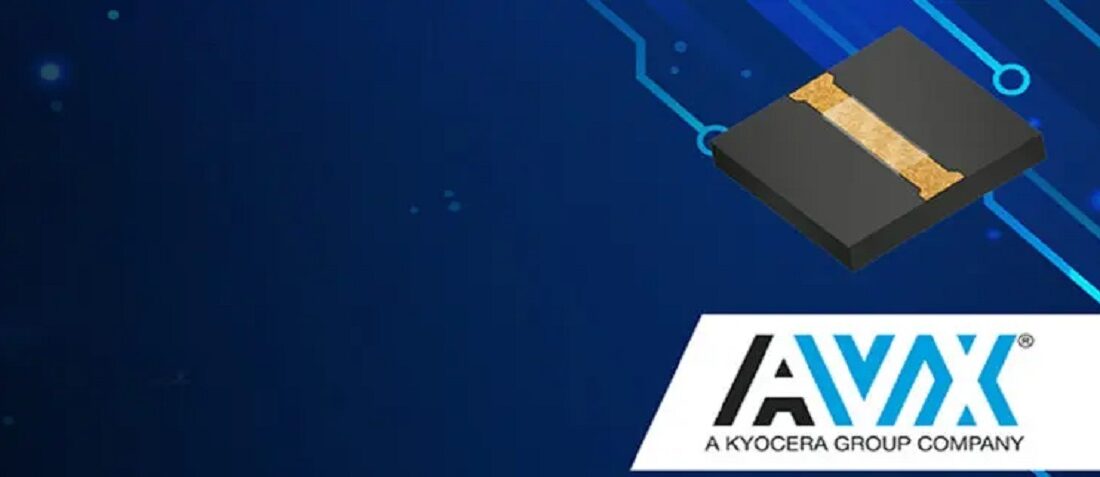
Passive Components for GaN Based Devices
- Posted by doEEEt Media Group
- On February 15, 2021
- 0
AVX Technical Paper
GaN-based power and RF (Radio Frequency) devices are now available from multiple manufacturers at affordable prices. AVX released a technical paper written by Ron Demcko and Daniel West on high-performance passive components for GaN devices.
Abstract
The theoretical limits of Silicon-based device performance are fast approaching, and in some cases, already here. Therefore, IC (integrated circuit) design companies have turned their efforts into driving costs down while increasing the performance of wide bandgap semiconductors such as GaN (Gallium Nitride).
Multiple sources have documented GaN-based semiconductor performance advantages of faster speed, lower loss, and higher frequency-voltage-temperature operation. Those advantages are, in turn, enabling end systems that have enhanced performance on lower power consumption levels in smaller and lighter packages, which are more reliable.
GaN devices have needs for high-performance passive components and create a need for whole new families of passive devices.
Introduction
Regardless if the GaN semiconductor is RF or power in end-use design, GaN devices show significant advantages over similar silicon devices in terms of efficiency, speed, operating frequency, power levels and temperature. Equivalent sized GaN to Silicon dies comparisons show massive current, voltage, power, and switching speed advantages, consistently favouring GaN.
Alternatively, a GaN-based semiconductor could be dramatically smaller than its Si counterpart if equivalent performance is the goal. Regardless of the route taken – GaN has the potential to change both RF and power electronics design tremendously because of significantly reduced conduction losses (lower RDS-ON) and faster switching capacity due to reduced material capacitance and enhanced electron mobility. This upheaval will create a whole new set of design issues from scenarios never encountered until now.
Two examples:
The first example is that of RF in nature and highlights the impact of GaNs power capability. Sturdivant¹ reports that heat flux on high power GaN MMICs (Monolithic Microwave Integrated Circuit) supporting multi-phased antenna arrays can approach 2.5kW/cm². To put this in perspective, this heat density level exceeds the power level of a home clothing iron. The natural concern is to interpret this condition as a need for high-temperature passive components – which is correct. However, beyond that, passives will need to handle faster voltage transitions, exhibit lower internal losses, and introduce minimal parasitic loading into the circuit.
The second example is that of the lower level power chargers – the type each of us uses in our daily lives. In this example, GaNs impact is one of dramatic end unit size reductions. Assuming approximately the same package size, GaN-based power converters can utilize increased switching frequency that results in smaller capacitor and inductor values used in designs. As a result, a typical low power switching supply can reduce its size by more than half, increasing the power density from 5.3 W/in³ to 11.4 W/in³ and dropping weight from 820g to 560g (~ 32% reduction)². These designs will require low inductance power MLCCs (Multi-Layer Ceramic Capacitor).
RF GaN passive component key needs:
- Miniaturization/High Frequency
- Filtering
- VDD Supply
- Thermal Control
Read more in-depth elaboration on these topics in the AVX papers in the link below. Further discussion topics include:
- Thin Film vs. Thick Film Capacitors
- Thin Film vs. MLO Filter
- Thermal Control
- Low Inductance MLCCs
- Tantalum Polymer Capacitors
- Stacked MLCCs
- High Voltage MLCCs
- High Power Film Capacitors
Source: AVX Technical Paper
- New ECSS-Q-ST-60C Standards Explained- Discover - June 4, 2025
- Accelerating Space Missions: Launch Faster with the ZSOM-F01 Rad-Tolerant SoM - June 3, 2025
- Miniature RF Connectors - April 29, 2025


0 comments on Passive Components for GaN Based Devices